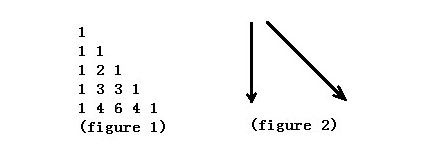DP?(数论+组合数学综合题:组合数性质+预处理+组合数取摸)
Link:http://acm.hdu.edu.cn/showproblem.php?pid=3944
DP?
Time Limit: 10000/3000 MS (Java/Others) Memory Limit: 128000/128000 K (Java/Others)Total Submission(s): 2515 Accepted Submission(s): 782
Problem Description

Figure 1 shows the Yang Hui Triangle. We number the row from top to bottom 0,1,2,…and the column from left to right 0,1,2,….If using C(n,k) represents the number of row n, column k. The Yang Hui Triangle has a regular pattern as follows.
C(n,0)=C(n,n)=1 (n ≥ 0)
C(n,k)=C(n-1,k-1)+C(n-1,k) (0
As the answer may be very large, you only need to output the answer mod p which is a prime.
Input
Input to the problem will consists of series of up to 100000 data sets. For each data there is a line contains three integers n, k(0<=k<=n<10^9) p(p<10^4 and p is a prime) . Input is terminated by end-of-file.
Output
For every test case, you should output "Case #C: " first, where C indicates the case number and starts at 1.Then output the minimum sum mod p.
Sample Input
1 1 2 4 2 7
Sample Output
Case #1: 0 Case #2: 5
Author
phyxnj@UESTC
Source
2011 Multi-University Training Contest 11 - Host by UESTC
题意:给出杨辉三角数塔模型,求从顶部到第n行第k列的元素所经过的路径最小和。
编程思想:
这里用到了组合数的性质公式:C(n,k)=C(n-1,k-1)+C(n-1,k) 。由题意得到的规律:从目标点出发,每次都往左上方走,然后,走到第0列的时候就往上一直走(全为1),即最小值。故答案为
C(n,k)+C(n-1,k-1)+……+C(n-k+1,1)+C(n-k,0)+C(n-k-1,0)+……C(0,0);若按得出的公式直接Lucas算,则TLE。。必须利用组合数的性质进行预处理。把C(n-k,0)写成C(n-k+1,0)(因为都是1!),这样,上面式子那一段,可以从尾到头依次合并,最终合并为
C(n+1,k)。所以这里只要求一次组合数就可以了。
预处理技巧:
定义一个数组,所有小于10000的数的阶乘对所有小于10000的的素数进行取模,这样到lucas定理计算的时候就可以直接用了。
详见代码注释。
AC code:
#include
#include
#include
#include
#include
#include
#include